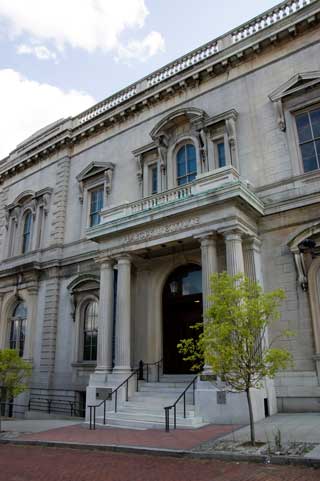
City and State: Baltimore, Maryland
Listed: 1964 (updated in 2002) – Baltimore City Historic Ordinance
Listed: 1971 – National Register
Type of district: Baltimore City Historic District, National Register Historic District
Note: The Baltimore City Historic District encompasses a smaller National Register Historic District, as shown on the accompanying map – the Baltimore City Historic District is outlined in blue, and the National Register Historic District is outlined in red.
Major Intersection: Charles Street/Washington Place and Monument Street/Mt. Vernon Place
Mount Vernon Place National Register Historic District Report
Mount Vernon Place National Register Historic District Map
The area now known as Mount Vernon Place was donated to Baltimore City by Revolutionary War Hero Colonel John Eager Howard from a portion of his estate, Belvidere. It is one of the first examples in the United States of a deliberate use of city planning to create a dramatic setting for an existing monument – in this case, Baltimore’s Washington Monument.
Mount Vernon Place is composed of four rectangular, block-long garden-parks: East and West Mount Vernon Place, and North and South Washington Place. These parks, along with the houses that line them, form the setting for Baltimore’s Washington Monument. Designed by Robert Mills and completed in 1829, the monument consists of a 165-foot Doric column sitting on a rectangular base, and surmounted by a 15-foot-high statue of George Washington by Enrico Causici. It was the first major monument in the United States built to honor the first president, and is considered today to be one of the finest examples of monumental architecture in this country.
Mount Vernon Place has always been a fashionable and sought-after residential district featuring some of Baltimore’s finest homes. Originally, these homes were lavishly-sized, single-family townhouses for wealthy Baltimoreans. After WWI, however, Mount Vernon Place underwent a steady transformation, and the townhouses, for the most part, were gradually subdivided into apartments or converted into use as offices or clubs.
